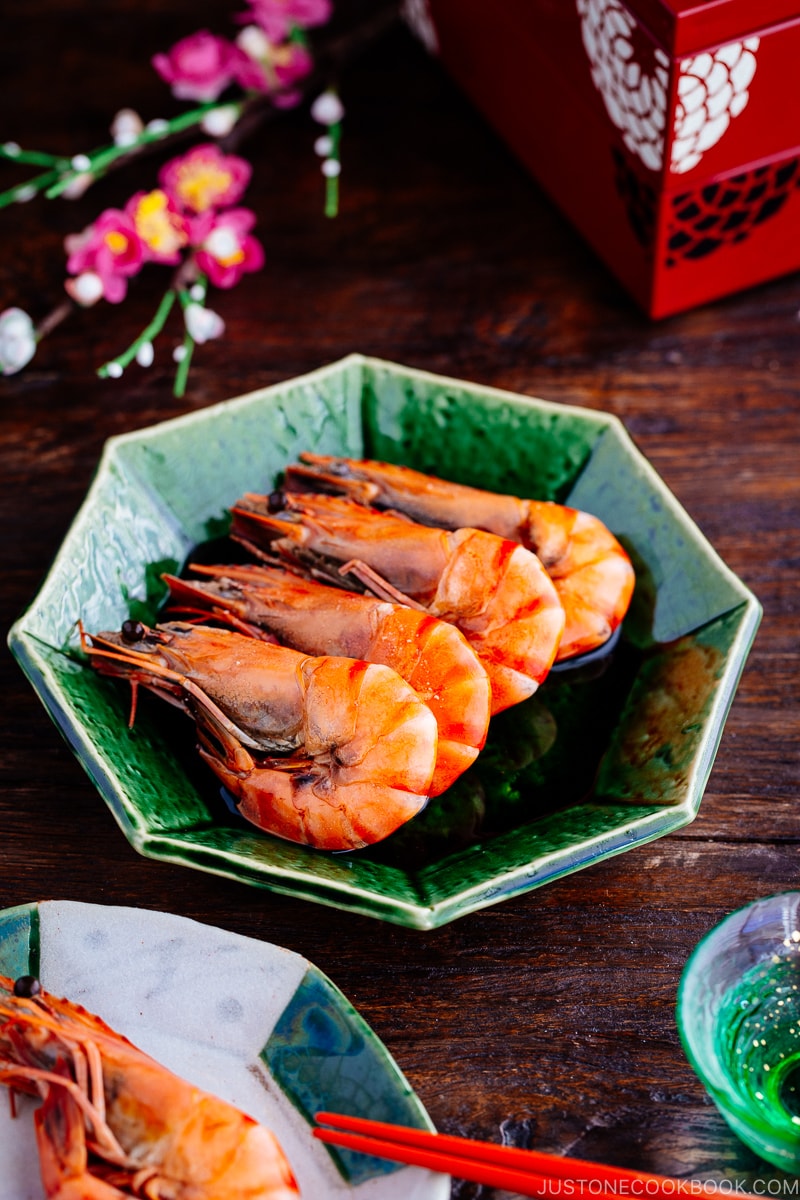
Why Do Japanese Eat Shrimp for the New Year?
Shrimp with bright vermilion color brings beauty into the Japanese New Year feast, Osechi Ryori. This shrimp is always served with head and shell on for the “grand” look on the table.
The reason why shrimp is used in Osechi Ryori is not just because of its beautiful looks, but it also signifies old people because shrimp has a mustache (We call “hige” (mustache in Japanese) but they are actually antennae) and is hunchbacked. So eating shrimp is believed to impart a long life symbolizing a long beard and bent back.
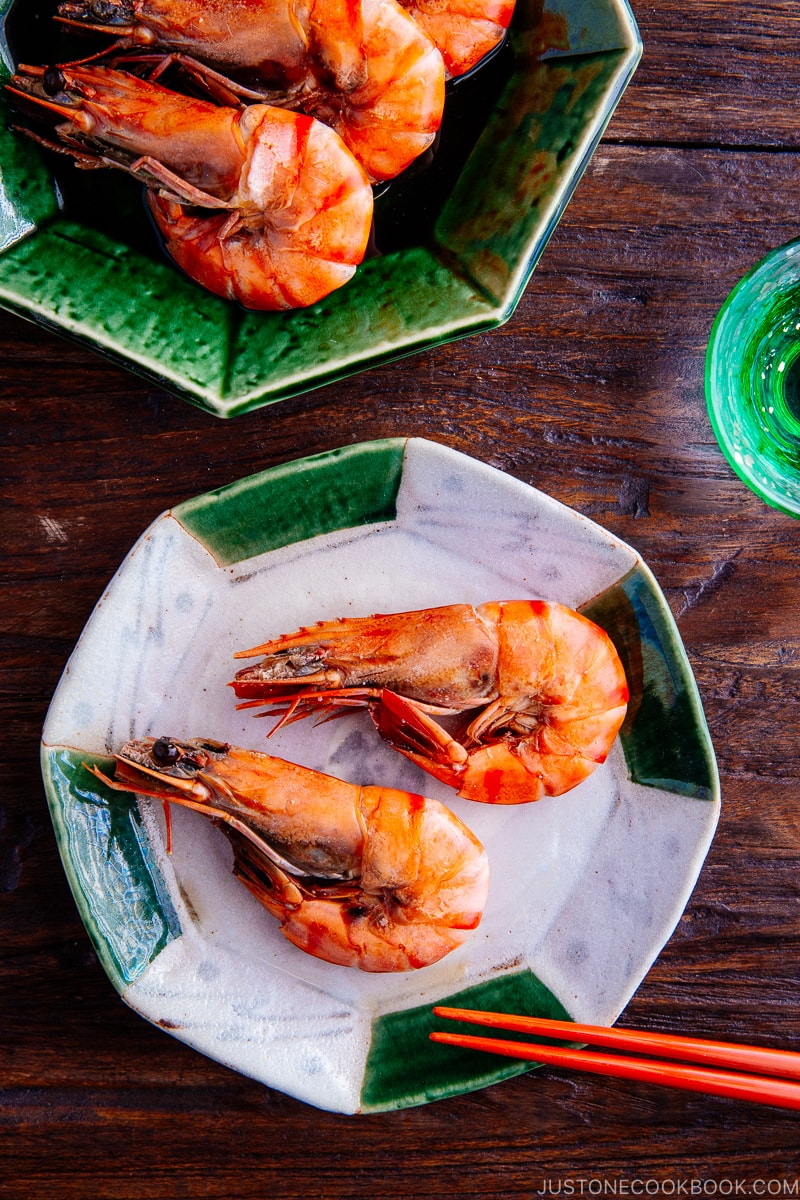
3 Tips to Make Successful Simmered Shrimp
1. Devein the Shrimp with Shell and Head-on
Devein the back of the shrimp with a skewer. The vein runs right along the back. Insert the tip of the skewer sideways about ½ inch down from the head of the shrimp, and pull the skewer tip up towards you.
This will lift up the vein and you can pull off the vein with the skewer or with your fingers. If the vein is broken, then insert again a bit lower towards the tail. If you can’t find the vein, then don’t worry about it.
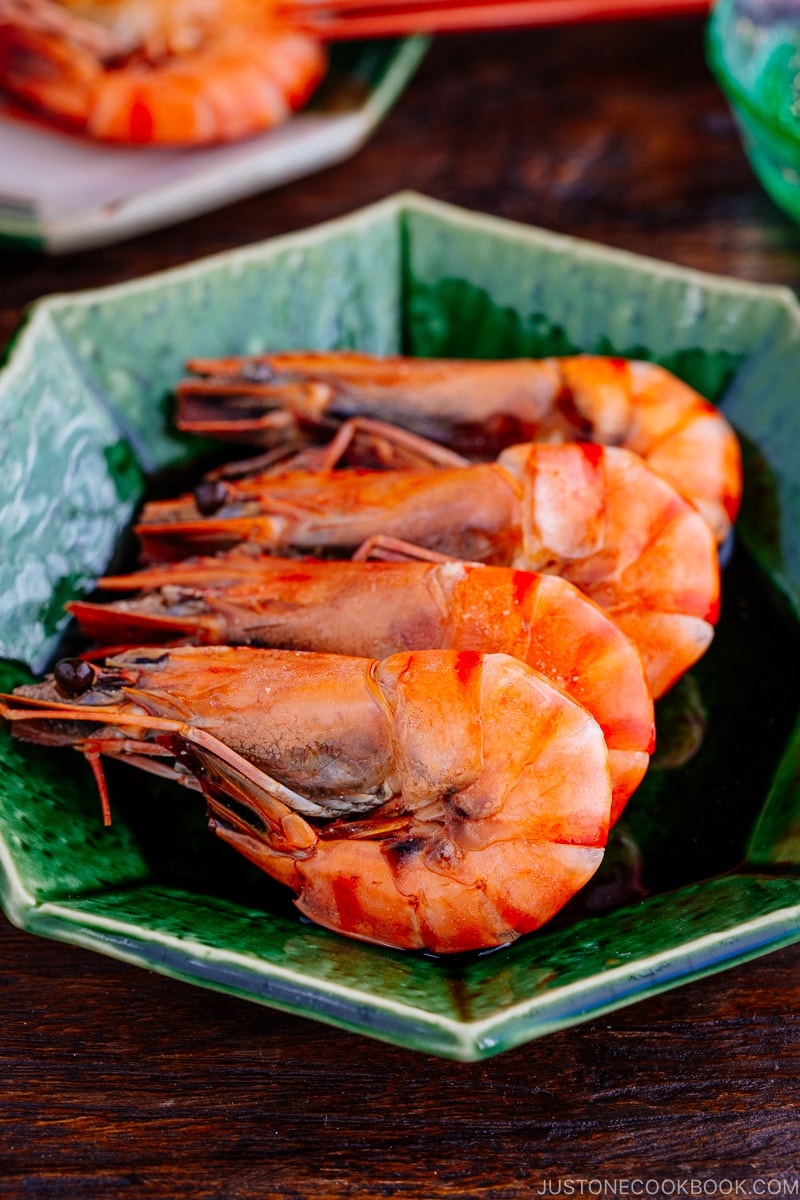
2. Do Not Overcook Simmered Shrimp
Overcooked shrimp is not delicious and will end up dry and tough. It’s important to cook the shrimp just right. For the standard black tiger shrimp, you only need to cook them for 4 minutes, unless it’s much smaller or larger than the typical size. So keep in mind that you will only need to cook between 3.5 to 5 minutes for the shrimp.
Make sure to place all the shrimp in the pot around the same time, so all of them finish cooking at the same time as well. If you spend too much time lining up shrimp in the saucepan, the first shrimp might be overcooked or the last shrimp is undercooked (depends on when you start timing).
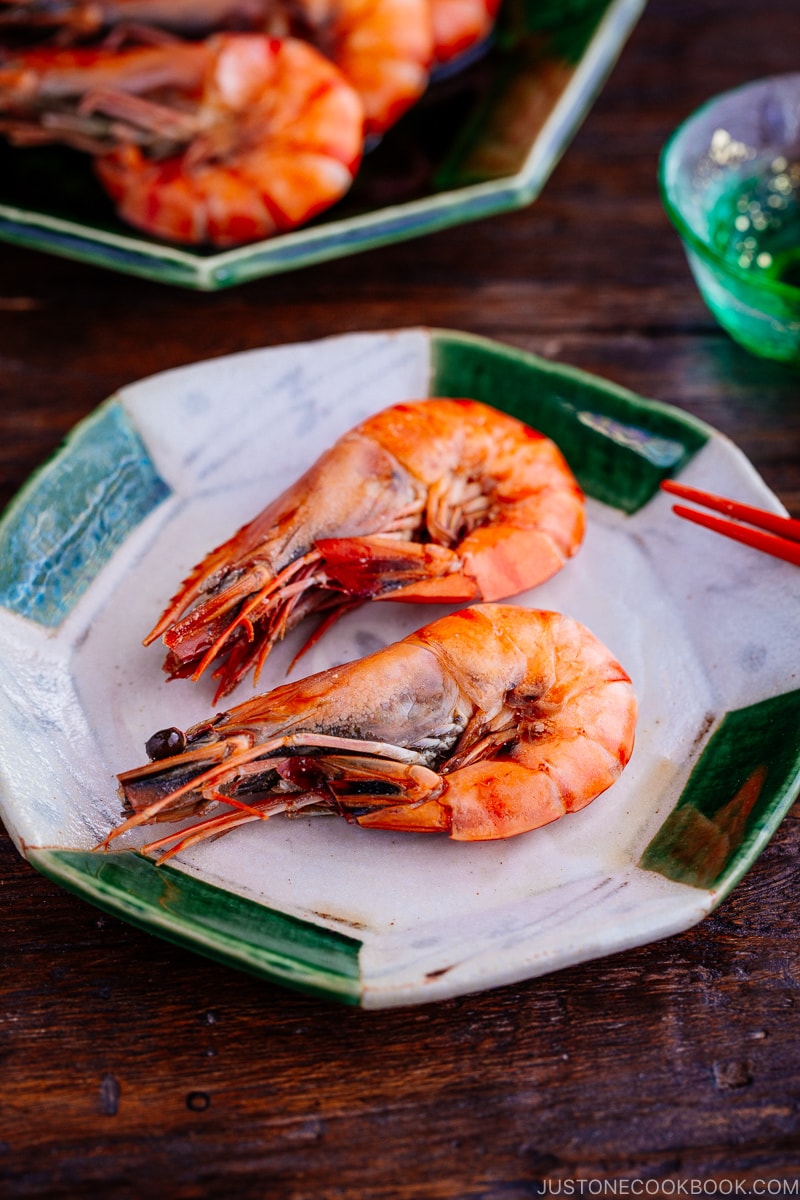
3. Strain/Filter the Cooking Liquid for Simmered Shrimp
If you are not a coffee drinker, you may not keep a coffee filter around. But if you do, I highly recommend using a coffee filter or paper towel to filter the cooking liquid when you strain it.
The cooking liquid contains fats and protein from the shrimp (despite the meticulous skimming while cooking). As you will be soaking the shrimp in the cooking liquid overnight, the well-filtered clean cooking liquid will help the shrimp look beautiful as a final result.
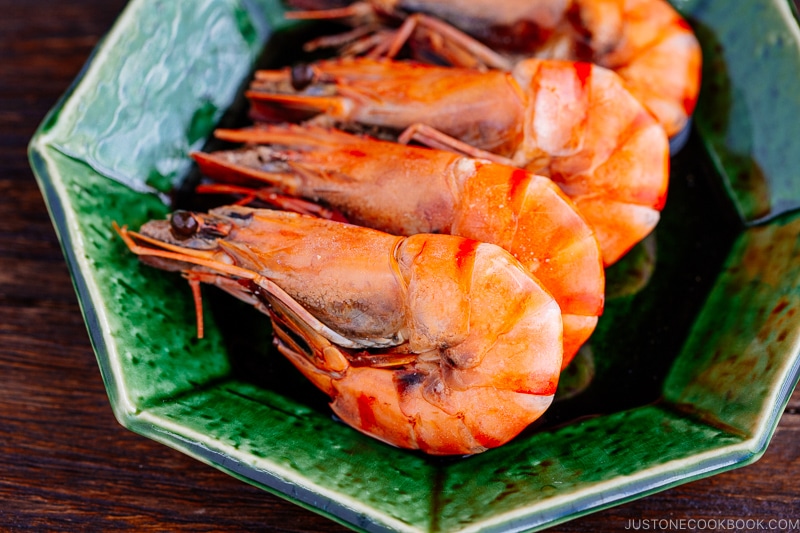
Wish to learn more about Japanese cooking? Sign up for our free newsletter to receive cooking tips & recipe updates! And stay in touch with me on Facebook, Pinterest, YouTube, and Instagram.
Simmered Shrimp
Ingredients
- 5 black tiger shrimp (4.4 oz, 125 g; with shells and heads on)
- ½ cup sake
- 2 Tbsp mirin
- ½ cup dashi (Japanese soup stock) (I used Awase Dashi, made with a combination of kombu and katsuobushi; in a pinch, substitute a Dashi Packet or Dashi Powder)
- 2 Tbsp usukuchi (light-colored) soy sauce (you can use regular soy sauce)
Instructions
Before You Start…
- Please note that this recipe requires soaking time of 4 hours or overnight. If you will include this dish in your Osechi meal, I recommend preparing it up to 1–2 days before you plan to serve. For more helpful tips on planning your Japanese New Year feast, please read my A 5-Day Osechi Cooking Timeline blog post.
- Gather all the ingredients.
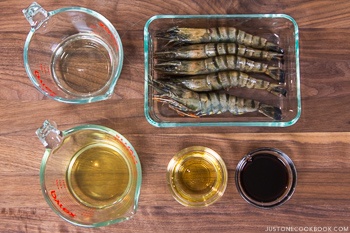
To Prepare the Shrimp
- With the shells and heads on, devein 5 black tiger shrimp (please follow step 2 of my tutorial on How to Devein Shrimp). Then, quickly rinse under cold running water. With a pair of kitchen shears (or knife), cut off the pointy tip of the head and the antennas. Finally, trim the tips of the tail at an angle for better presentation (optional).
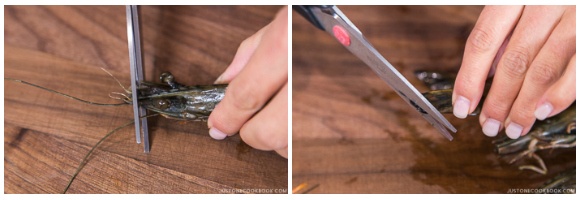
To Simmer
- In a medium saucepan, combine ½ cup sake and 2 Tbsp mirin. Turn on the heat to medium and bring it to a boil to let the alcohol evaporate.
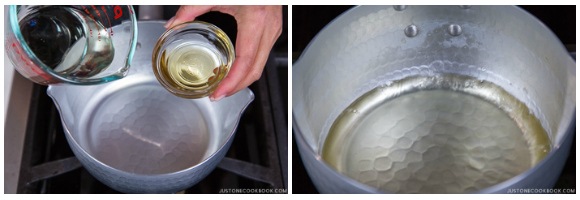
- Add ½ cup dashi (Japanese soup stock) and 2 Tbsp usukuchi (light-colored) soy sauce and bring to a boil again.
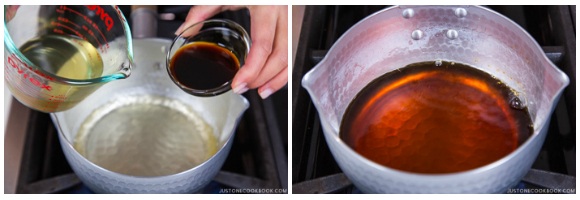
- Once boiling, lower the heat to maintain a simmer. Place the shrimp in the pot, bending and holding the backs with chopsticks or a pair of tongs to form the shape of the Japanese hiragana character “つ”. Work quickly and add all the shrimp to the pot around the same time so the cooking time will be similar.
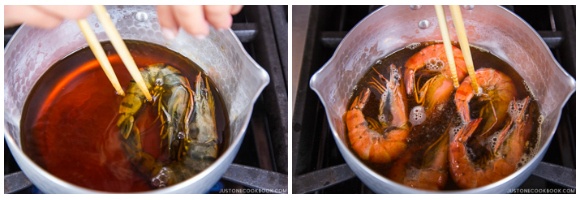
- Simmer for 4–5 minutes over low heat. Do not overcook. While it‘s cooking, use a fine-mesh skimmer to skim the scum and fat off the surface of the simmering liquid.
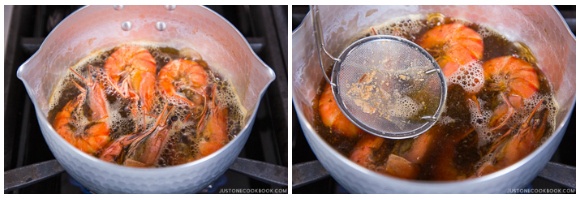
- Once it’s cooked, immediately transfer the shrimp to a container and reserve the cooking liquid.
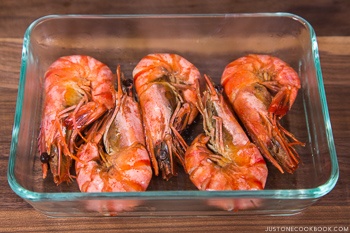
- Strain the cooking liquid into a bowl, preferably through a coffee filter or super fine-mesh strainer. This removes the unwanted protein and fat so the final dish will look cleaner and prettier. Discard the filter and let the cooking liquid cool.
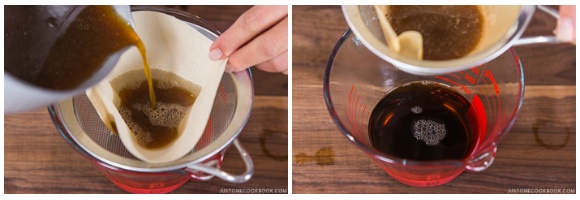
- Once the cooking liquid is completely cool, pour it over the shrimp. Do not pour while the liquid is still hot, as this will overcook the shrimp. Cover and soak for 4 hours or overnight.
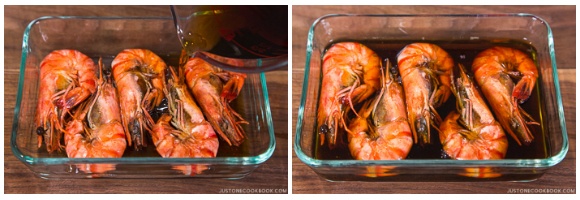
To Serve
- Serve it cold or at room temperature for Osechi Ryori.
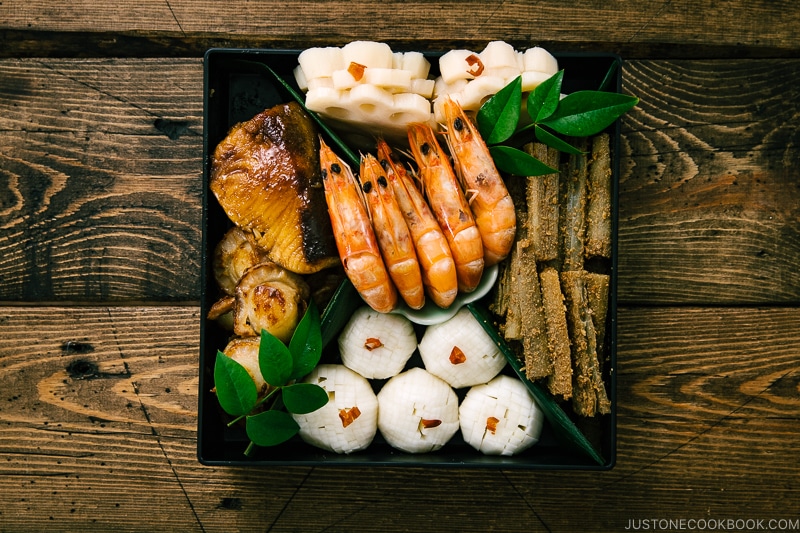
To Store
- You can keep the leftovers in an airtight container and store it in the refrigerator for 3-4 days.
Nutrition
Did you make this recipe?
Tag @justonecookbook on Instagram so we can see your delicious creation!
Editor’s Note: This post was originally published on December 30, 2016. It’s been republished in December 2021.



